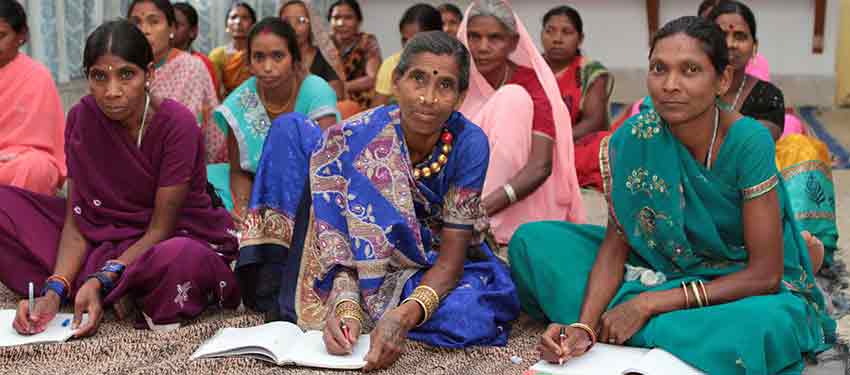Education and Women
Education is a gradual process which brings positive changes in human life and behavior. Having education helps people think, feel and behave in a way that contributes to theirsuccess. Education enriches and enhances life and strengthens one`s intellect and wisdom.
In India women’s education was at its highest in the Vedic era. Women were equal to men in knowledge and education. The customs of infant marriage and enforced widowhood were not prevalent in Vedic India. Women in ancient India had free access to education. Even some of the hymns of the Rigveda were composed by poetesses. We get references of learned ladies as Visvavara, Lopamudra, Urvasi, Maitreyi, Gargi and others.

Also Read :-
- Women Education Making a Tangible Difference to People’s Lives
- Dera Helping Women Make Strides
- Sirsa Girls Make India Proud
But female education received a great set back during the later Vedic period primarily owing to the deterioration of the religious status of women. With advent of foreigners the Brahmanical society became rigid and conservative. In the Vedic period, girls were married about the age of 16 or 17 but in the later Vedic period (from 500 B.C. to 500 A.D.) girls were married at the age of 8 or 9.
Early marriage of girls gave a death-blow to female education. In society, as a whole, female education received a great set-back during this period, still it continued to receive attention in rich, aristocratic and royal families. Girls in these families were given a fairly good literary education but surely not Vedic literature. The only education a girl of an ordinary family received was one which fitted her duties in the household of her husband. Thus, the education of girls was entirely domestic.
India experienced second Mughal invasion in the eleventh century, from this period till the middle of the eighteenth century, when the British rule was established in the country, the breakdown of social institutions, the vast migration of people and the economic depression in the country contributed to a general decline of social life, particularly among women. Education of women in whatever form came to a drastic decline. PurdaPratha, Sati Pratha, child marriage, girl killing, polygamy etc. were the main social evils of this period.

During the 19th century Jyoyirao Phule and his wife Savitribai Phule strongly opposed the gender inequality. They were one of the earlier crusaders of education for girls. They started first school for girls in the year in 1848 in BhideWada, Pune. In South India, the first boarding schools for girls came up in Tirunelveli in 1821. When it was midcentury, the missionaries in Madras had included under its banners, 8000 girls.
Women’s employment and education was acknowledged in 1854 by the East Indian Company. Slowly after that there was progress in female education. But it initially tended to be focussed on the primary school level and was related to the richer sections of the society. The overall literacy rate of women in India increased from 0.2% in 1882 to 6% in 1947.
Women’s education got a fillip after the country got independence in 1947. With the Indian Government taking various measures to provide education to all Indian women, women literacy rate has grown over the last three decades. In 1971 only 22% of Indian women were literate, by the end of 2001 54.16% female were literate. The growth of female literacy is 14.87% as compared to 11.72% of that of male literacy rate.
“Educate a Girl, Empower a Nation.” In order to make democracy successful in a country, women education is equally necessary as men. Women play a very important role in the development of the nation. In these circumstances we require further improvement in gender equality, level of literacy, equal employment opportunities and empowerment of women in every corner of India. Even though considerable progress has been made with regard to literacy and education, the overall structure still remains unfavourable to women.
It is crucial to note that the attitude of people towards women’s education will go a long way in explaining the extent to which the people want their nation to develop. We may conclude withthe words of Dr. James Aggrey, “If you educate a man you simply educate an individual, but if you educate a woman you educate a whole nation.’














































